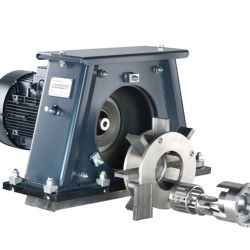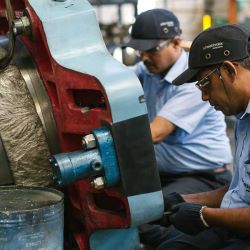A lean, mean Wheelabrator machine
The concepts of lean and continuous improvement are not new. Indeed, the implementation of efficient processes with minimal waste was a major driver in Japan’s rise to become a world force in manufacturing in the 1980s.
Today, manufacturing companies all over the world – including most of our customers – follow a lean methodology to optimize their processes and production capabilities. For many organizations, it’s become second nature to think lean.
We continue on our own lean journey, as it is becoming more and more engrained into the way we operate. We aim to provide our products at the best speed, quality and cost possible by constantly improving material handling, inventory, quality, scheduling, personnel – all of which contribute to a better value for our customers.
Thinking lean: in numbers
Making Wheelabrator a leaner organization always means cultural change. For the past year, this has been driven by our Jaguar Value Creation Program (VCP).
The program is running at six Norican locations in the Americas and Europe, including here in LaGrange where:
- 127 staff have completed ‘white belt’ training to learn the basics of lean
- 22 people recently completed ‘yellow belt’ training so they can lead and direct lean-focused projects.
The idea is to give project owners the ability to identify problems and improvement opportunities and execute on those. Once people have achieved a certain belt, they can then deliver training for the level below, meaning expertise will become increasingly in-house.
Our ultimate goal: all employees are certified at least at white belt level, with 10-20 per cent of the workforce qualified at yellow belt level. Ultimately, there will be a handful of black belt holders across the group who will act as lean experts.
Lean in practice
We’re using 5S to create an ordered and efficient workplace. In practice, this means resources people need every day are close at hand and easy to find, while those used less often are stored or disposed of.
Our next priority is to implement improved work cell layouts to reduce lead and delivery times, speed up reactions to special requests and improve product quality.
Problem solving through continuous improvement
As well as streamlining everyday operations, we’re evolving our problem solving procedure to help employees get to the root cause of operational problems and take action to tackle them.
Continuous Improvement Centres (CIC), provide staff with a means to take immediate action to solve issues as they occur, reducing the impact on operations.
In addition, staff can avoid lengthy and complicated processes by taking action to overcome problems they are close to. For example, if late delivery of materials leads to manufacturing delays, the procurement team can work with suppliers to ensure the right level of service.
Cutting across boundaries – what’s next for lean
We now plan to expand the VCP to all Norican sites to create a world class lean organization.
The next step is to extend the process mapping already in place to span different functions. Through this, findings can be applied across the group rather than limited to specific operational areas.
For example, if one part of the business has developed a more effective work cell layout, another department could apply it elsewhere.
We’re looking to create a ripple effect in which progress and improvements in various parts of the business can inspire change elsewhere.
Eyes on the horizon
Our lean work also takes into account new developments in technology. Additive Manufacturing, for example, can be a lean tool, as long as it adds to the overall objective of improving quality, reducing cost and accelerating product delivery.
Our lean journey has taught us to never stop looking for better ways of doing things. Whether that’s a small change to a routine task or a whole new way of prototyping – ultimately, to let us deliver better solutions for our customers.


